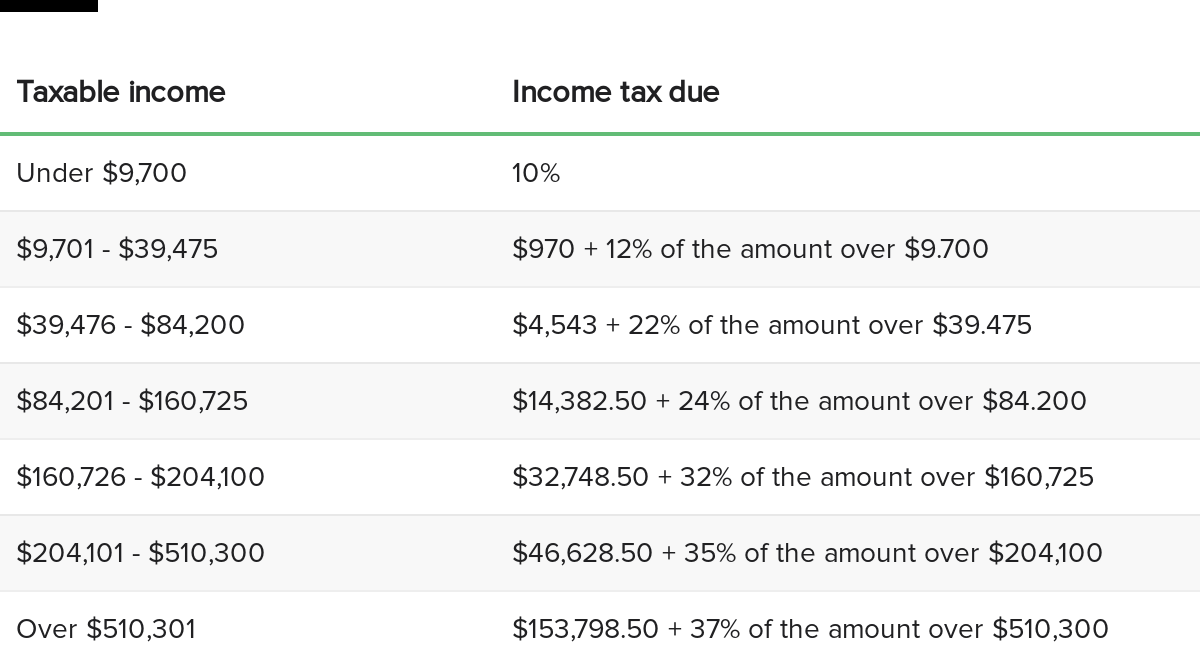2019 tax brackets: What's your tax rate?
If you don't know your tax bracket, you're not alone. Many Americans have no idea where they fall on the scale that determines how much federal income tax they pay every year.
The 2019 tax code outlines seven brackets, or income levels. The IRS adjusts these cutoffs every year to keep pace with inflation.
Income tax brackets for single filers
Married couples filing separately should follow the brackets for single filers, but note that the 37% tax bracket kicks in at income over $306,175.
Income tax brackets for married couples filing jointly
Income tax brackets for heads of household
Here's a quick reminder of how the federal income tax works. It's designed to be slightly progressive, meaning that you pay lower rates on your initial income for the year; as you earn more, you pay a higher tax rate on the additional income. So if someone falls into the 24% tax bracket, that doesn't mean they're paying 24% of their income in taxes. Usually, it's much less.
So, a single person who made $100,000 in taxable income last year would fall into the 24% tax bracket. But instead of paying $24,000 to the federal government, the person would pay much less — $18,174.50. That works out to an effective tax rate of just over 18%.
You don't need to worry too much about your tax bracket if you're filing electronically or getting help from a tax pro, since most tax software will come with this information pre-loaded.
Bear in mind that the tables refer to taxable income. The tax law is designed to shield part of your income from taxes with tools like deductions that can lower your taxable amount.



